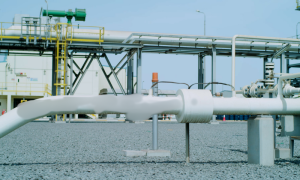The China-Pakistan Economic Corridor (CPEC) represents a cornerstone of economic collaboration between the two countries with a broader strategic partnership that has deepened over the years. Launched in 2013 as part of China’s ambitious Belt and Road Initiative (BRI), CPEC aims at enhancing connectivity between the two countries through a network of highways, railways, and pipelines stretching from Gwadar Port in Pakistan to China’s Xinjiang region. This corridor is poised to transform Pakistan’s economic landscape and significantly boost bilateral trade, catalyzing growth, and development across various sectors.
CPEC’s foundation rests on three main pillars: infrastructure development, energy projects, and industrial cooperation. Infrastructure projects include the construction and upgradation of highways and railways that will facilitate trade and transport between China and Pakistan, reducing travel time and costs, while enhancing the efficiency of goods movement. For instance, the Karakoram Highway, often referred to as the “Eighth Wonder of the World”, is being expanded to improve its capacity to handle increased trade volumes. The improvement in Gwadar Port, a deep-sea port in Balochistan, is a critical component, designed to provide China with a direct maritime route to the Arabian Sea, thus bypassing the longer and strategically vulnerable route through the Strait of Malacca. This port is expected to become a major hub for trade, not only between China and Pakistan, but also with other countries in the region, positioning Gwadar as a linchpin of regional commerce.
Energy projects under CPEC are equally important. Pakistan has long struggled with chronic energy shortages, which have severely hampered industrial productivity and economic growth. CPEC includes numerous energy initiatives aimed at addressing these shortages, such as coal-fired power plants, hydroelectric projects, and renewable energy ventures like solar and wind farms. These projects are not only intended to meet the immediate energy needs of the country, but also to lay the groundwork for a more stable and sustainable energy future. The addition of these energy resources is expected to foster a more stable and conducive environment for economic activities, enabling businesses to operate more efficiently and attract further investment.
The industrial cooperation envisaged under CPEC includes the establishment of special economic zones (SEZs). These SEZs are designed to attract Chinese and international investors, promoting industrialization, and creating job opportunities in Pakistan. The transfer of technology and skills from Chinese enterprises to local Pakistani firms is anticipated to boost Pakistan’s manufacturing capabilities and export potential. For instance, the Rashakai SEZ in Khyber-Pakhtunkhwa is expected to become a hub for various industries, including textiles, pharmaceuticals, and electronics, thus contributing to economic diversification, and reducing Pakistan’s reliance on traditional sectors such as agriculture.
Bilateral trade between China and Pakistan has seen substantial growth in recent years, with China becoming Pakistan’s largest trading partner. In 2020, the trade volume between the two countries reached approximately $17.49 billion. Pakistani exports to China include textiles, seafood, and agricultural products, while imports from China comprises machinery, electronics, and chemicals. The trade balance has traditionally been skewed in favor of China, but efforts are being made to promote Pakistani exports and reduce the trade deficit. Initiatives such as the Pakistan-China Free Trade Agreement (FTA) aim at providing better access to Chinese markets for Pakistani goods, enhancing competitiveness and expanding the range of exported products.
The prospects for future trade between the two countries under CPEC are promising. As infrastructure projects reach completion, logistical efficiencies are expected to enhance trade flows. Improved connectivity will facilitate not only bilateral trade, but also regional, positioning Pakistan as a trade conduit between China, Central Asia, and the Middle East. The operationalization of Gwadar Port is likely to attract more maritime trade, bolstering Pakistan’s strategic economic position. Moreover, the development of transport and trade corridors will open new avenues for commerce, potentially transforming Pakistan into a key trade and logistics hub in the region.
However, there are challenges and uncertainties that could impact the future of CPEC and bilateral trade. Political instability in Pakistan, security concerns, and regional geopolitical dynamics pose significant risks. The ongoing tensions between India and Pakistan, as well as the broader geopolitical rivalry between China and the United States, could influence the security and economic viability of CPEC projects. Additionally, the economic sustainability of CPEC projects is crucial, as heavy reliance on Chinese loans could exacerbate Pakistan’s debt burden. Ensuring that these projects are economically viable and do not overextend Pakistan’s financial capacity is essential for long-term success.
It is necessary for Pakistan to implement sound economic policies, ensure transparency in projects execution, and develop a stable investment climate to fully realize CPEC’s potential. Effective governance, anti-corruption measures, and adherence to international standards will be key to attract and retain investment. Moreover, engaging local communities and stakeholders in the development process can help mitigate social and environmental impacts, ensuring that the benefits of CPEC are widely shared.
CPEC embodies a transformative initiative with the potential to significantly enhance Pakistan’s economic prospects and bilateral trade with China. The corridor’s comprehensive approach, involving infrastructure, energy, and industrial cooperation, is designed to address major developmental challenges and propel economic growth. While the future holds substantial promise, navigating the associated risks and challenges will be central for the successful realization of CPEC’s objectives and the sustained enhancement of China-Pakistan trade relations. As both countries continue to collaborate and build on this strategic partnership, CPEC stands as a testament to the potential for international cooperation to drive economic development and regional integration.























